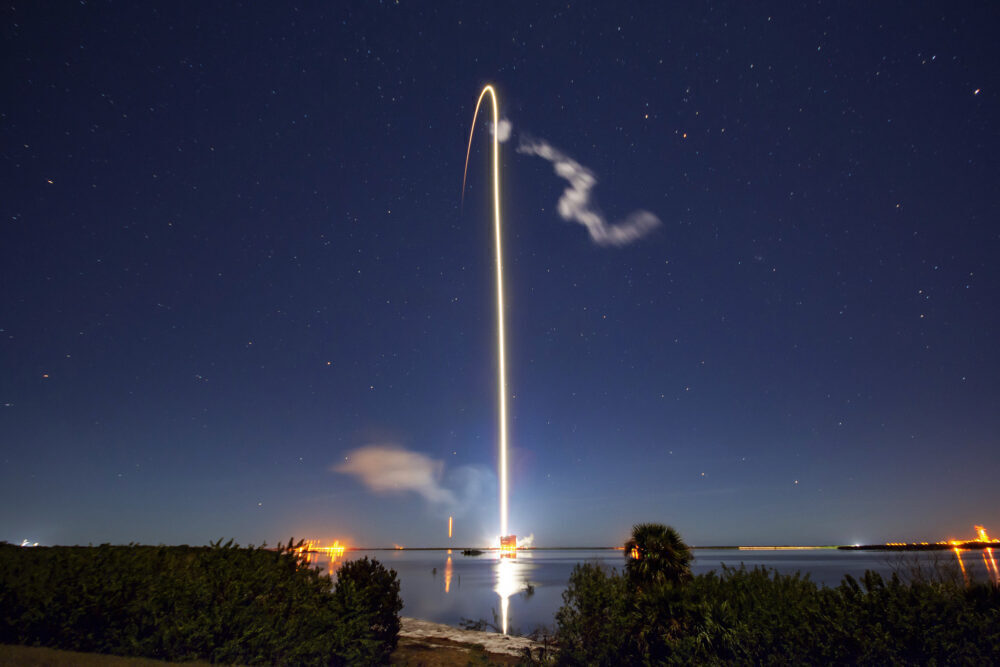Elon Musk’s SpaceX has already launched 1,635 satellites for its low-Earth orbit Starlink constellation. To date, most users have been remote householders, but that was never the limit of this impressive technology. SpaceX is now working on interlinking satellites using laser beams, in order to provide WiFi to aircraft in flight anywhere in the world. The company says it is already in talks with several airlines on the subject.

Inflight WiFi plans moving forward for Starlink
It’s no secret that SpaceX is keen to develop a means to connect its Starlink constellation to aircraft in flight. Inflight WiFi is a lucrative market and continues to be an investment that airlines are prioritizing, even as they make their way out of the pandemic.
Now, further details have emerged regarding the way in which this connection will be facilitated. As reported in The Verge yesterday, the company plans to use laser links to connect Starlink satellites to one another in order to form a signal relay to aircraft in flight, eliminating the need for a signal to be bounced off the ground.
At present, geostationary satellites need to be able to ‘see’ both the ground station and the aircraft in order to provide connectivity. This means that over large bodies of water or in remote areas, signal provision can sometimes be unreliable. By establishing an inter-satellite laser link, Starlink would be capable of connecting aircraft anywhere in the world with high speed, stable WiFi.

Jonathan Hofeller, SpaceX’s vice president of Starlink and commercial sales, confirmed at the recent Connected Aviation Intelligence Summit on Wednesday that,
“The next generation of our constellation, which is in work, will have this inter-satellite connectivity.”
He noted that the antenna used would be a specific airline antenna, and that SpaceX intended to design and build specific technology for the aviation industry.
In talks with ‘several airlines’
The move to begin supplying WiFi from Starlink to aircraft in flight was an expected development for the SpaceX constellation. The potential for a low-Earth orbit network such as this has long been touted as the solution to faster, more stable inflight connectivity, and with airlines keen to continue investing in technology, it’s a natural progression for Starlink.
Without naming any names, SpaceX says it is already in discussions with a number of airlines to get the technology launched. Hofeller noted that,
“We’re in talks with several of the airlines … We have our own aviation product in development … we’ve already done some demonstrations to date, and looking to get that product finalized to be put on aircraft in the very near future.”

Before the end of last year, SpaceX filed plans to test out its network using five Gulfstream aircraft. It applied to the Federal Communications Commission (FCC) to operate one user terminal onboard each of the five private jets both on the ground and inflight. Earlier this year, it also filed with the FCC for approval to supply connections to ‘Earth stations in motion’ – any non-stationary user including trucks, ships, and aircraft.
The potential of Starlink to supply aircraft could be a gamechanger for inflight connectivity. The closer position of the satellite terminals could facilitate much faster speeds and lower latency than is currently possible. But SpaceX has competition, notably from the UK’s OneWeb and from Amazon’s planned low-Earth orbit constellation.
This article is brought to you by Simple Flying Connectivity, a new category on Simple Flying dedicated to inflight connectivity. Click here to read all of our inflight connectivity content.
from Simple Flying https://ift.tt/3gEVxQT
via IFTTT

Comments
Post a Comment